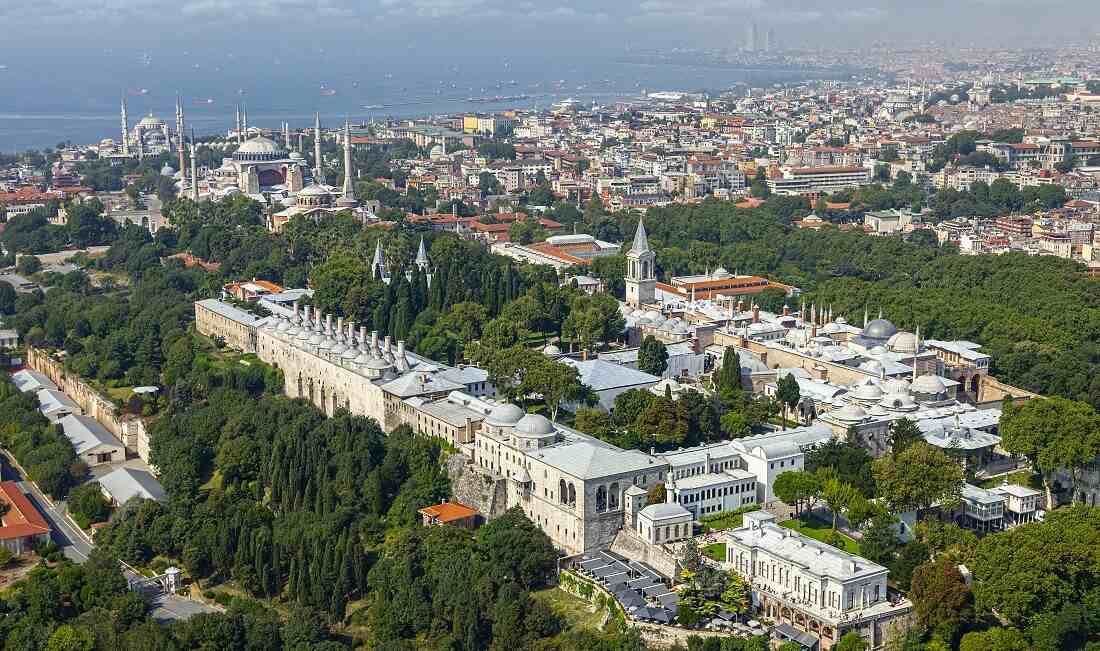
Topkapi Palace is one of Istanbul’s most famous and historically significant landmarks, built in the mid-15th century by Sultan Mehmed II. Because it was the Ottoman sultans’ primary residence and administrative headquarters for close to 400 years, the palace is one of the most significant locations in Turkish history. Nowadays, the palace is on the Sultan Ahmet Plaza. Over the centuries, Topkapi Palace has played an instrumental role in shaping Istanbul’s cultural and political landscape.
Topkapi Palace’s significance is multifaceted, encompassing its historical and cultural importance. The palace served as the center of the Ottoman Empire for centuries, and it played a crucial role in the empire’s expansion and development. It was also the location of many important historical events, such as the signing of the Treaty of Hunkar-Iskelesi between the Ottoman Empire and Venice in 1838.
The palace’s cultural significance is equally essential. Topkapi Palace is a treasure trove of art, architecture, and decorative arts, showcasing the Ottoman Empire’s rich cultural heritage. Its buildings, gardens, and collections of art and artifacts are testaments to the empire’s grandeur and splendor, providing a window into the past for visitors and scholars alike.
Today, Topkapi Palace is one of Istanbul’s most popular tourist destinations, drawing visitors from around the world who come to experience the grandeur and magnificence of the Ottoman Empire firsthand. In addition, its cultural and historical significance makes it an important site for tourism, research, and scholarship, ensuring that its legacy will endure for generations.
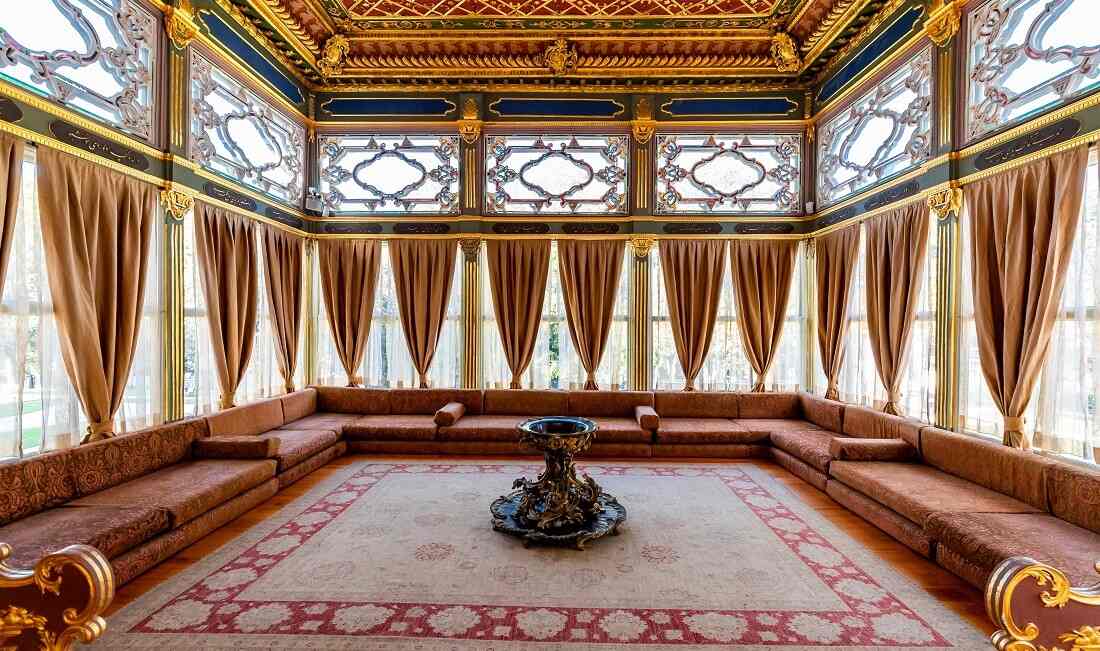
Topkapi Palace was constructed in the mid-15th century by Sultan Mehmed II shortly after the conquest of Constantinople in 1453. The palace was built on the old Byzantine acropolis. It has been the primary home of the Ottoman sultans and the center of their government. The palace’s construction took several years, involving the work of many skilled artisans and architects.
Over the centuries, Topkapi Palace served as the center of the Ottoman Empire. A succession of Ottoman sultans used it, and each made significant improvements to the palace to suit their preferences and needs. For instance, Sultan Suleyman the Magnificent added several structures to the court in the 16th century, including the famous Harem section, which housed Sultan’s family and concubines. The palace continued to be used as the center of Ottoman political and administrative power until the 19th century, when the Ottoman Empire began to decline.
In the 19th century, the palace underwent significant changes and renovations as part of a modernization program to bring the Ottoman Empire in line with European standards. As a result, the court became a museum in 1924 and became available to the public in 1925. Since then, it has been extensively restored and renovated, with new sections added to the palace to house exhibits and displays showcasing the Ottoman Empire’s cultural and artistic heritage.
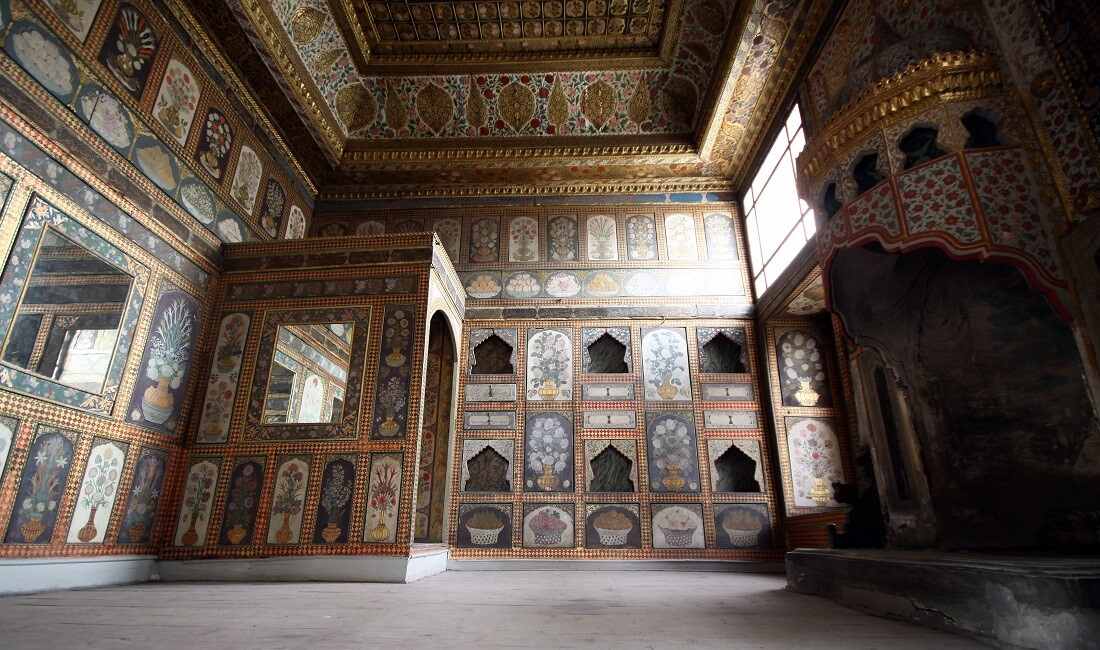
The Topkapi Palace is a beautiful example of Ottoman architecture and design. It has many courtyards, gates, and buildings, showing its long history and cultural importance. Byzantine, Seljuk and Persian architectural styles influence the palace’s design, creating a unique blend of Islamic and Christian traditions.
The palace layout is based on a series of courtyards that connect. Each yard has a different purpose. The first courtyard, the Imperial Courtyard, is the largest and grandest of the yards. It features several important buildings, including the Audience Chamber, the Palace Kitchens, and the Imperial Council Chamber.
One of the most impressive features of Topkapi Palace is the Gate of Salutation, which leads from the first courtyard into the second courtyard. The gate is an example of Ottoman architecture at its finest, with intricate carvings and ornate decorations that reflect the palace’s grandeur and importance.
Another key architectural feature of Topkapi Palace is the Harem, located in the palace’s third courtyard. The Harem served as the living quarters of Sultan’s family and concubines. It featured stunning tilework, intricate carvings, and beautiful courtyards.
Topkapi Palace’s design and architecture have significantly influenced other Ottoman-era buildings, including mosques, palaces, and public buildings. In addition, many other buildings have emulated the palace’s layout and design principles. As a result, its architectural features, such as ornate decorations and intricate carvings, have become hallmarks of Ottoman architecture.
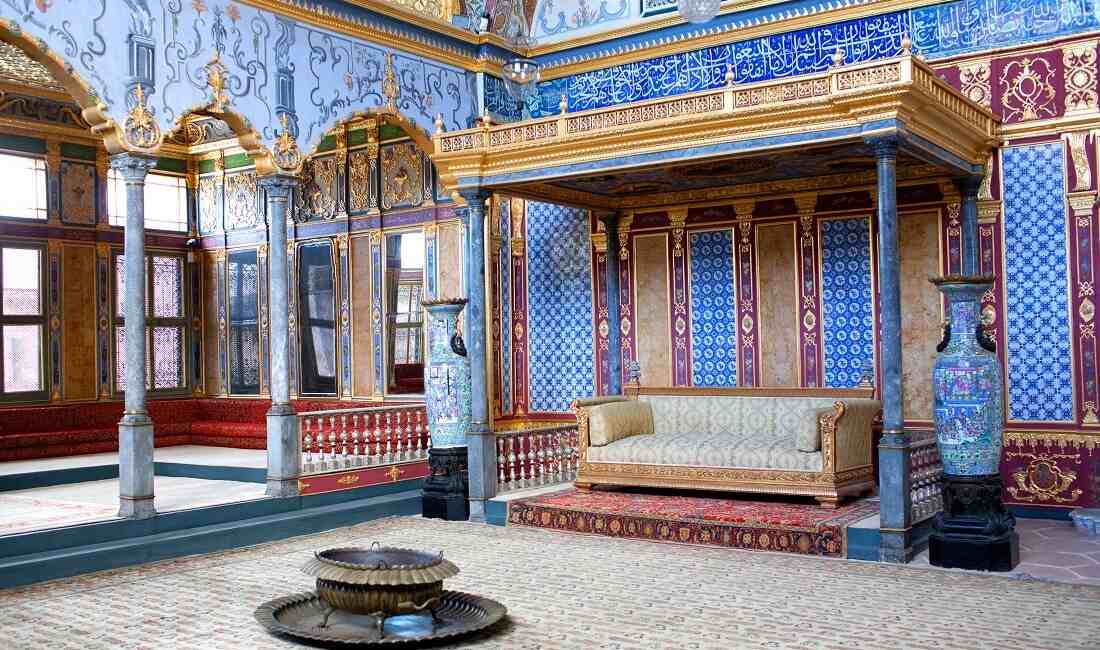
The word “Harem” refers to a private section of the palace that was reserved for Sultan’s family and female members of his court. The Harem in the Topkapi Palace was home to hundreds of women, including wives, concubines, and servants, who lived in luxurious and ornately decorated quarters. It was one of the most heavily guarded areas of the palace. It was accessible only to those with permission from the Sultan.
The history of the Harem in the Topkapi Palace dates back to the 15th century when the Ottoman Empire was at its height. The Harem was built as a private sanctuary for the Sultan and his family, away from the public eye. It was a place where the Sultan could relax and entertain, surrounded by his most trusted companions and loved ones. Over the centuries, the Harem grew in size and complexity, with new buildings and sections added to accommodate the Sultan’s expanding family. By the 19th century, it had expanded to include more than 400 rooms. The Harem also played a crucial role in the politics and power struggles of the Ottoman Empire. The Sultan’s wives and concubines had significant influence and could use their position to sway Sultan’s decisions.
Today, visitors to the Topkapi Palace can explore the Harem and see the exquisite decoration and architecture that was once reserved for the Ottoman elite. The Harem features several rooms and courtyards, including Sultan’s apartments, the apartments of the concubines, and the queen mother’s apartments. Visitors can also see the famous Courtyard of the Black Eunuchs, where the eunuchs who guarded the Harem would gather. The Harem also houses a small museum that displays various artifacts from the Ottoman era, including clothing, furniture, and jewelry.

The Treasury: The Topkapi Palace’s Treasury is one of the world’s most impressive collections of historical artifacts. It has an extensive collection of things that belonged to the Ottoman sultans, like jewelry, precious stones, and unique items like the Topkapi Dagger and the Spoonmaker’s Diamond. The Treasury was first established in the 15th century. Over time, the collection became one of the world’s most significant collections of Islamic art and artifacts.
The Audience Chamber: The Audience Chamber was the room where the Sultan would receive visitors, including foreign ambassadors, dignitaries, and local officials. It was an important space where the Sultan could demonstrate his power and authority. The chamber’s construction dates back to the 16th century, and it underwent numerous renovations over time, with the most significant changes taking place during the reign of Sultan Mahmud II in the 19th century.
The Imperial Council Chamber: The Imperial Council Chamber was the room where Sultan’s advisors would meet to discuss matters of state. The chamber’s construction dates back to the 16th century, and it underwent several renovations over time. Nevertheless, it was an important space where the empire’s most potent officials would gather to discuss matters of war, diplomacy, and governance.
The Circumcision Room: The Circumcision Room is a significant part of the palace and was used to host the traditional circumcision ceremony for Sultan’s sons. The room’s construction dates back to the 16th century and underwent several renovations. It was an important place where Sultan’s sons would go through the ritual of circumcision. In Ottoman society, circumcision was an essential rite of passage for young boys.
The Palace Kitchens: The Palace Kitchens were an essential part of the Topkapi Palace and included several kitchens that could accommodate large-scale cooking for the palace’s inhabitants and guests. The kitchens’ construction dates back to the 15th century, and over time, they underwent several renovations to keep up with the demands of the palace’s inhabitants. However, the most famous kitchen complex was the “Sofa-i Hümayun,” built during Sultan Abdulaziz’s reign in the 19th century.
The Tiled Kiosk: The Tiled Kiosk is a beautiful pavilion built in the 15th century and famous for its intricate tile work. It was first used to store Sultan’s valuable things and to host essential people from other countries. Over time, it became a place for the Sultan to enjoy private meetings and relaxation. It underwent several renovations over time and is one of the few structures in the palace that survived the great fire of 1574.
The Museum of the Imperial Treasury: It is a collection of things that belonged to the Ottoman sultans. The museum contains some of the palace’s most valuable and historically significant objects, including the Topkapi Dagger, the Spoonmaker’s Diamond, and the Kasikci Diamond. The museum was established in the mid-19th century and underwent several renovations over time.
The Sultan’s Portraits: There is a collection of over 150 portraits of the Ottoman sultans in the Second Court of Topkapi Palace. The sultans themselves commissioned the portraits, which they used to demonstrate their power and authority. They are in order of time, starting with the beginning of the empire and ending with its fall. Visitors can observe the evolution of Ottoman fashion and style over the centuries. The portraits frequently include inscriptions outlining Sultan’s accomplishments and virtues.
The Baghdad Pavilion: Sultan Murad IV built it in the 17th century. It’s known for its ornate decorations and as a private gathering and entertainment venue. The pavilion had a large central hall with a raised platform where the Sultan would sit and was used for banquets, receptions, and private meetings with foreign dignitaries. In the 19th century, it was converted into a theater where plays and musical performances were held. Nowadays, it is open to visitors as a museum, showcasing the finest examples of Ottoman art and design.
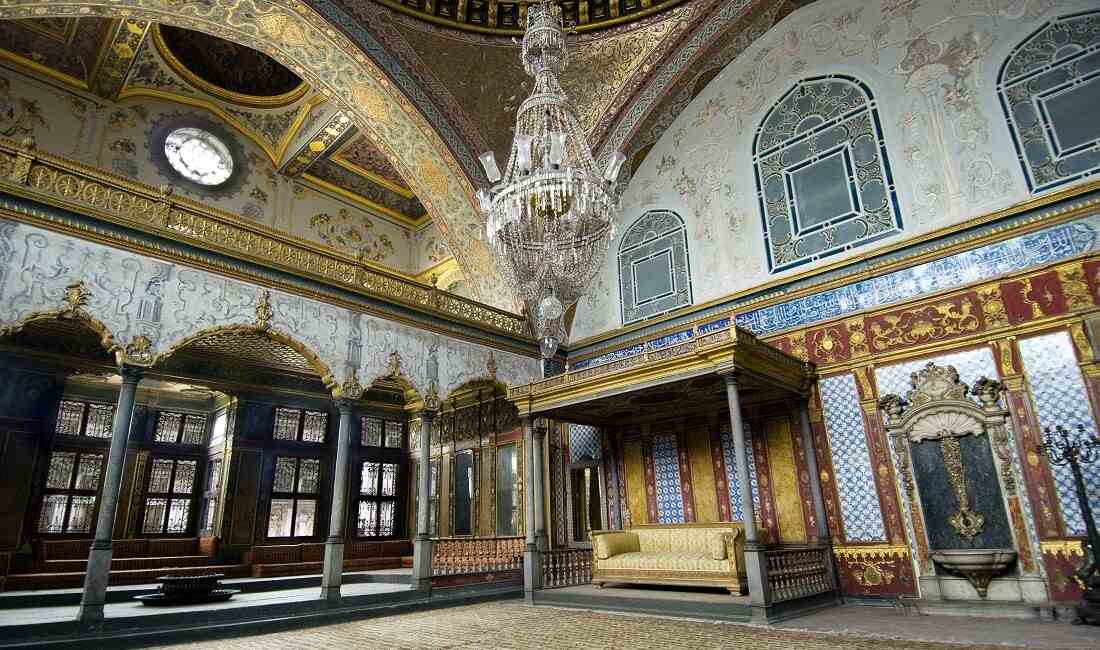
Hagia Irene, located in the gardens of Topkapi Palace, is one of Istanbul’s most ancient and historically significant religious structures. Emperor Constantine built it as a church in the 4th century AD. In 532 AD, it was burned down in the Nika riots. The current structure was rebuilt by Emperor Justinian I in the 6th century, with several significant restorations made throughout the centuries. It was used as the main church of the Eastern Orthodox Patriarchate before the construction of the Hagia Sophia. During the Latin occupation of Constantinople in the 13th century, Hagia Irene served as the Roman Catholic cathedral of the city. During the rule of the Ottomans in the 15th century, it became a mosque.
In addition to its religious history, Hagia Irene also has a military past. During the reign of Sultan Mehmed II, the church became an army arsenal, and it remained as such until the 20th century. The church was restored and opened to the public as a museum in 1914. It has been used as a concert hall in the modern era, hosting classical music performances and other cultural events.
Despite its rich history and architectural significance, Hagia Irene is less well-known than Hagia Sophia, which is situated nearby and attracts more visitors. Nevertheless, Hagia Irene’s impressive architecture and design continue to fascinate and attract visitors from around the world. The church is notable for its austere exterior and grand interior, soaring columns, and a large central dome. Hagia Irene is a testament to Istanbul’s long and complex history, and it serves as an important reminder of the city’s diverse religious and cultural heritage.

Visiting the Topkapi Palace is relatively straightforward, and visitors can expect to spend several hours exploring the site. The palace is open to visitors every day of the week except for Tuesdays. However, the opening hours vary depending on the season, so it is best to check the official website or confirm with a tour operator for the most up-to-date information. Generally, the palace opens at 9:00 am and closes at 4:45 pm.
The admission fee to the palace is relatively inexpensive, especially compared to other popular tourist attractions worldwide. However, it is essential to note that there is a separate fee for entering the Harem, a more private palace section. Visitors with disabilities can access most of the palace’s areas. However, it is worth noting that the site is extensive, and some areas may be more challenging to navigate.
Visitors can expect to see various exhibits and tours at Topkapi Palace. The palace has many rooms and displays that show how rich and beautiful the Ottoman Empire was. The Treasury, which has an extensive collection of jewelry, weapons, and other valuable items from the Ottoman era, is one of the most popular displays. The palace also houses several Islamic artifacts, including ancient manuscripts and religious relics.
Visitors can join guided tours of the palace, which are available in various languages. These tours typically last 45 minutes to an hour and provide an excellent introduction to the palace’s history and significance. There is also an audio guide available for those who prefer to explore the site at their own pace.
To make the most of a visit to Topkapi Palace, we recommend you arrive early to avoid crowds and long queues. The palace is a well-known destination, and as such, it often experiences high levels of foot traffic, particularly during the busiest times of the year for tourism. It is also a good idea to wear comfortable shoes as the palace grounds cover a large area and involve a lot of walking. Finally, visitors should respect the site’s historical and cultural significance and follow any instructions or guidelines provided by the staff.
